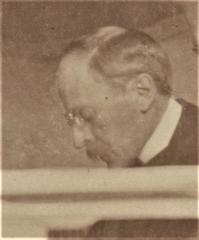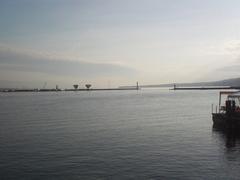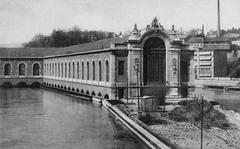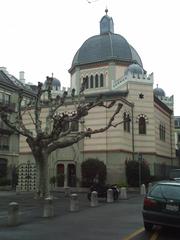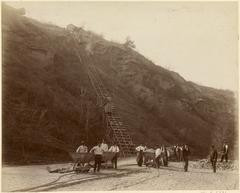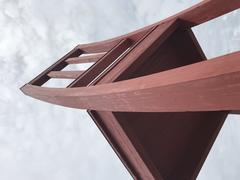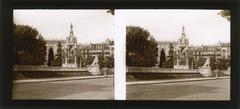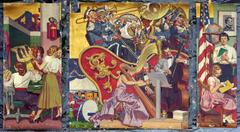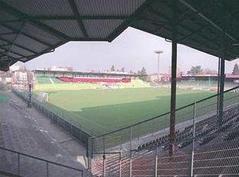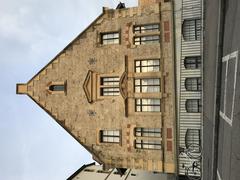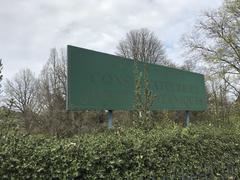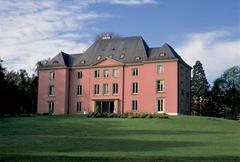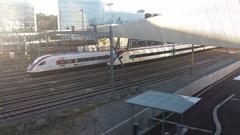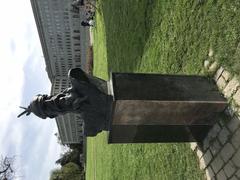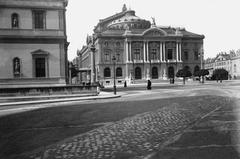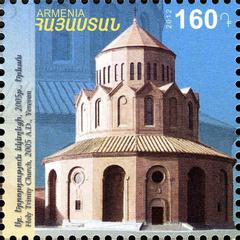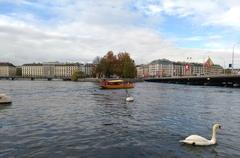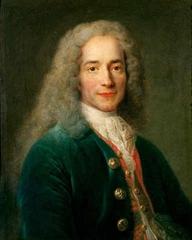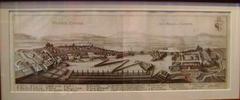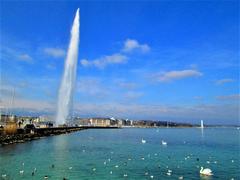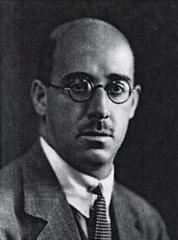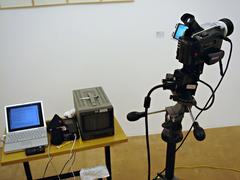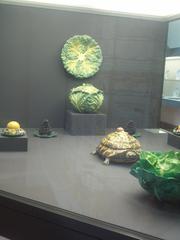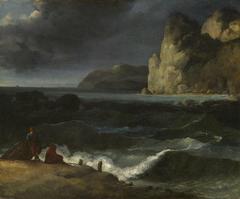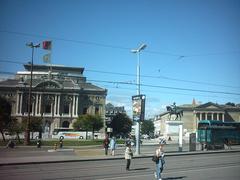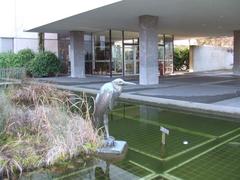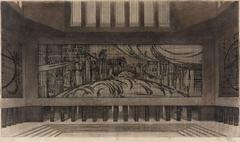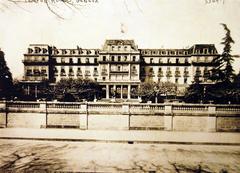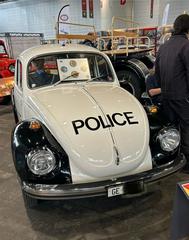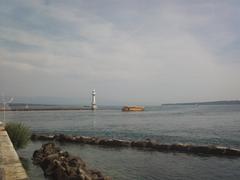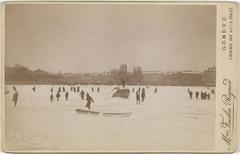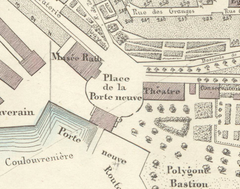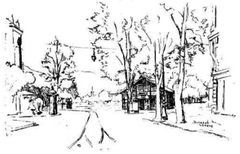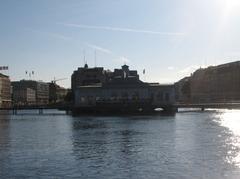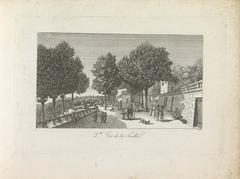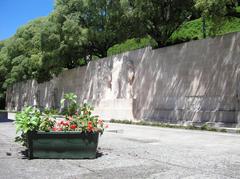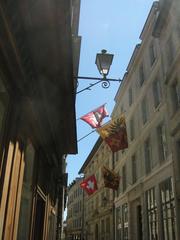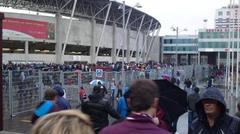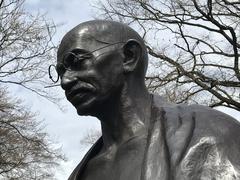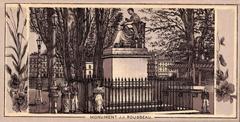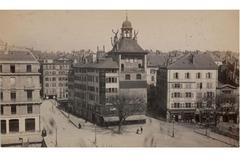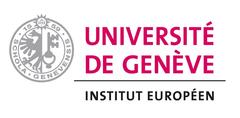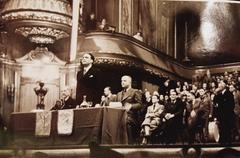Visiting the Collection des Moulages de l’UNIGE, Geneva: Comprehensive Guide to Hours, Admission, and Cultural Highlights
Date: 04/07/2025
Introduction
Set within Geneva’s vibrant cultural landscape, the Collection des Moulages de l’Université de Genève (UNIGE) is a remarkable resource for anyone interested in the art and archaeology of classical antiquity. This collection, which preserves nearly 200 meticulously crafted plaster casts of Greek, Roman, and Mediterranean masterpieces, offers a rare, tactile opportunity to engage with the artistic heritage of the ancient world. Housed in the industrial-chic former Société d’Instruments de Physique (SIP) building, the collection bridges past and present, serving scholars, students, and the public alike.
This guide provides a detailed overview of the collection’s history, significance, and practical visiting information—including opening hours, ticketing, accessibility, and travel tips—ensuring you make the most of your visit to one of Geneva’s most distinctive historical sites (Métiers d’Art Genève; Wikipedia; PSSAUK Review; UNIGE events).
Contents
- Introduction
- History and Origins
- Collection Highlights
- Educational and Cultural Value
- Visiting Information
- Location and Accessibility
- Opening Hours and Admission
- Guided Tours and Educational Programs
- Facilities and Visitor Tips
- Nearby Attractions
- Special Exhibitions and Events
- Frequently Asked Questions (FAQ)
- Conclusion
- Sources and Further Reading
History and Origins
The roots of the Collection des Moulages trace back to the 18th century, when Geneva’s École de dessin (School of Drawing) was founded to train local artisans by giving them access to plaster casts of classical sculptures. These casts were vital for art education, allowing students to study the proportions and styles of ancient masterpieces that would otherwise be unobtainable. Throughout the 19th century, the collection expanded, supported by the Société des Arts and prominently displayed at the Musée Rath (Métiers d’Art Genève; Wikipedia).
By the 20th century, the collection transitioned into an essential academic resource at UNIGE, gaining new acquisitions and educational functions under the stewardship of figures like Professor José Dörig. The addition of architectural models and galvanoplastic reproductions further enriched its offerings. Over time, the collection grew to include around 200 pieces, including celebrated works such as the Apollo Belvedere, Venus de Milo, and the Laocoön Group (PSSAUK Review).
After periods of challenging storage, the collection found its current home in the former SIP building in 2018, where the interplay between industrial architecture and classical art creates an inspiring environment for learning and exploration.
Collection Highlights
The Collection des Moulages offers visitors the chance to observe high-quality plaster casts of some of antiquity’s most iconic sculptures and architectural elements. Noteworthy pieces include:
- Apollo Belvedere: Exemplifying the ideal of classical beauty.
- Venus de Milo: Renowned for its mysterious grace and Hellenistic artistry.
- Laocoön Group: A vivid depiction of the Trojan priest and his sons in dramatic struggle.
- Friezes from the Héphaïstéion (Athens): Architectural reliefs capturing ancient religious and civic life.
- Model of the Temple of Aphaia at Aegina: Providing a detailed look at ancient Greek temple architecture.
- Replicas of the Hildesheim Treasure: Galvanoplastic Roman silverware.
- Mycenaean weapons and Boscoreale treasures: Further expanding the collection’s diversity (Wikipedia).
Recent acquisitions, such as the bust of the priest Laocoön and the “Pugiliste des Thermes” (added in 2024), illustrate the collection’s ongoing growth and relevance (UNIGE events).
Educational and Cultural Value
The Collection des Moulages is much more than a static display. It plays a dynamic role in university teaching and research, offering students and specialists hands-on opportunities to study classical art in three dimensions—a perspective that photographs and digital images cannot replicate. The collection also hosts public events, workshops, and guided tours, making ancient art accessible to a wider audience and fostering a deeper appreciation for Geneva’s cultural legacy.
Participation in events such as La Nuit des Musées, thematic festivals, and temporary exhibitions helps connect Geneva’s past with contemporary audiences, highlighting the enduring relevance of classical art in today’s world (Wikipedia; UNIGE events).
Visiting Information
Location and Accessibility
- Address: 10, rue des Vieux-Grenadiers, 1205 Genève, in the Quartier des Bains, a district known for its concentration of contemporary art venues like MAMCO and the Centre de la Photographie.
- Building: Housed in the historic former SIP building.
- Accessibility: The venue is fully accessible to visitors with reduced mobility. For specific needs, contact [email protected] or +41 22 379 72 98.
Opening Hours and Admission
- Regular Hours: Monday to Wednesday, 10:00–18:00. Some sources also indicate Tuesday to Friday, 10:00–17:00; always confirm on the official website or UNIGE events page.
- Admission: Free for all visitors. Special events like La Nuit des Musées may require a cultural pass (CHF 10), with free admission for under-18s and persons with disabilities (UNIGE Nuit des Musées).
Guided Tours and Educational Programs
- Guided Tours: Available for individuals, families, and groups. Advance booking is recommended.
- Educational Workshops: Programs for children and schools, including hands-on activities such as plaster casting and thematic workshops (e.g., ancient fashion).
- Languages: Most tours are in French; English-language tours can be arranged during special events or upon request.
Facilities and Visitor Tips
- Restrooms: Available on-site.
- Cloakroom: Not available—travel light.
- Wi-Fi: Not guaranteed.
- Photography: Non-flash photography for personal use is generally permitted. Restrictions may apply during certain exhibitions.
- Best Times to Visit: Weekdays offer a quieter experience. Check online for updates on special exhibitions and public events.
Getting There
- Public Transport:
- Tram: Plainpalais stop (lines 12, 15, 18) is nearby.
- Bus: Lines 1, 32, and 35 serve Plainpalais.
- Parking: Public parking at Plaine de Plainpalais; street parking is limited.
- Bicycle: Bike racks available in the area.
Nearby Attractions
Enhance your cultural itinerary by visiting other highlights in the Quartier des Bains and Plainpalais:
- MAMCO (Musée d’Art Moderne et Contemporain)
- Centre de la Photographie de Genève
- Museum of Natural History
- Parc des Bastions
- A variety of cafés and restaurants for refreshments.
Special Exhibitions and Events
Recent and upcoming exhibitions include:
- “Tomorrow Never Dies. Hyperréalités du Laocoon” (Feb 2024): Exploring the Laocoön group’s continuing influence.
- “L’objet photographié. L’oeuvre photographique de Jürg Zbinden” (Oct 2023): A look at archaeological photography.
- “1513. La Renaissance des Etrusques” (Oct 2022): Rediscovering Etruscan heritage.
- “En rouge et noir. Fragments peints de céramique grecque antique” (Oct 2024): Painted Greek ceramics.
- “Carnets d’Égypte” (Mar 2025): Egyptology discoveries.
- La Nuit des Musées (May 2025): Extended hours and special programming (UNIGE events).
Stay informed about new events via the official UNIGE Collection des Moulages website.
Frequently Asked Questions (FAQ)
Q: What are the current visiting hours?
A: Typically Monday to Wednesday, 10:00–18:00. Some exhibitions may offer additional hours. Always check the official calendar for confirmation.
Q: Is admission free?
A: Yes, admission is free for all visitors. Special events may require a ticket or cultural pass.
Q: Are guided tours available?
A: Yes, guided tours and group visits can be arranged in advance. Workshops are available for both children and adults.
Q: Is the museum accessible for visitors with reduced mobility?
A: Yes, the venue is fully accessible.
Q: Can I take photographs inside?
A: Yes, non-flash photography is generally permitted for personal use, except during certain temporary exhibitions.
Q: What languages are tours offered in?
A: Most tours are in French; English tours are available for groups and during special events.
Conclusion
The Collection des Moulages de l’UNIGE is a must-see destination for anyone interested in classical art, archaeology, or Geneva’s rich cultural fabric. Its expertly crafted plaster casts, dynamic educational programs, and free admission make it accessible to visitors of all backgrounds. Situated in one of the city’s most creative districts, the collection offers a unique blend of ancient artistry and contemporary ambiance. For up-to-date information on hours, events, and programs, consult the official website, and consider using the Audiala app for enhanced audio guides and tips.
Suggested Visuals
- High-resolution images of signature moulages such as the Apollo Belvedere and Venus de Milo, with alt text: “Plaster cast of Apollo Belvedere at Collection des Moulages Geneva.”
- Map of Quartier des Bains highlighting the collection and nearby attractions.
- Photographs of the building’s industrial interior contrasting with classical sculptures.
Sources and Further Reading
- Métiers d’Art Genève. Collection des Moulages de l’Université de Genève
- Wikipedia contributors. Collection des moulages de l’Université de Genève
- PSSAUK Review. Casting a New Light: Plaster Casts & Cast Collections in Europe and Beyond
- UNIGE Archaeology Events and Exhibitions

